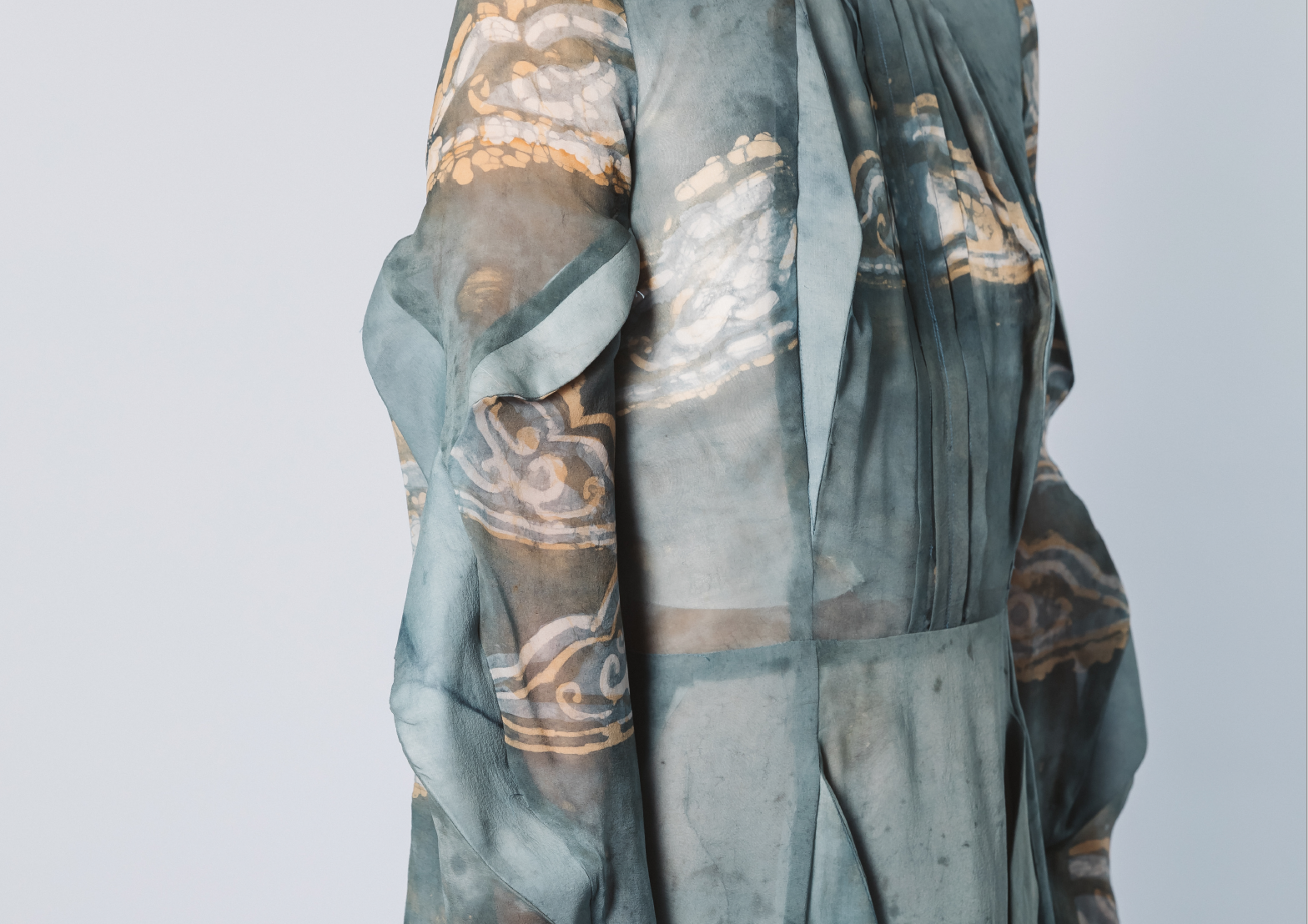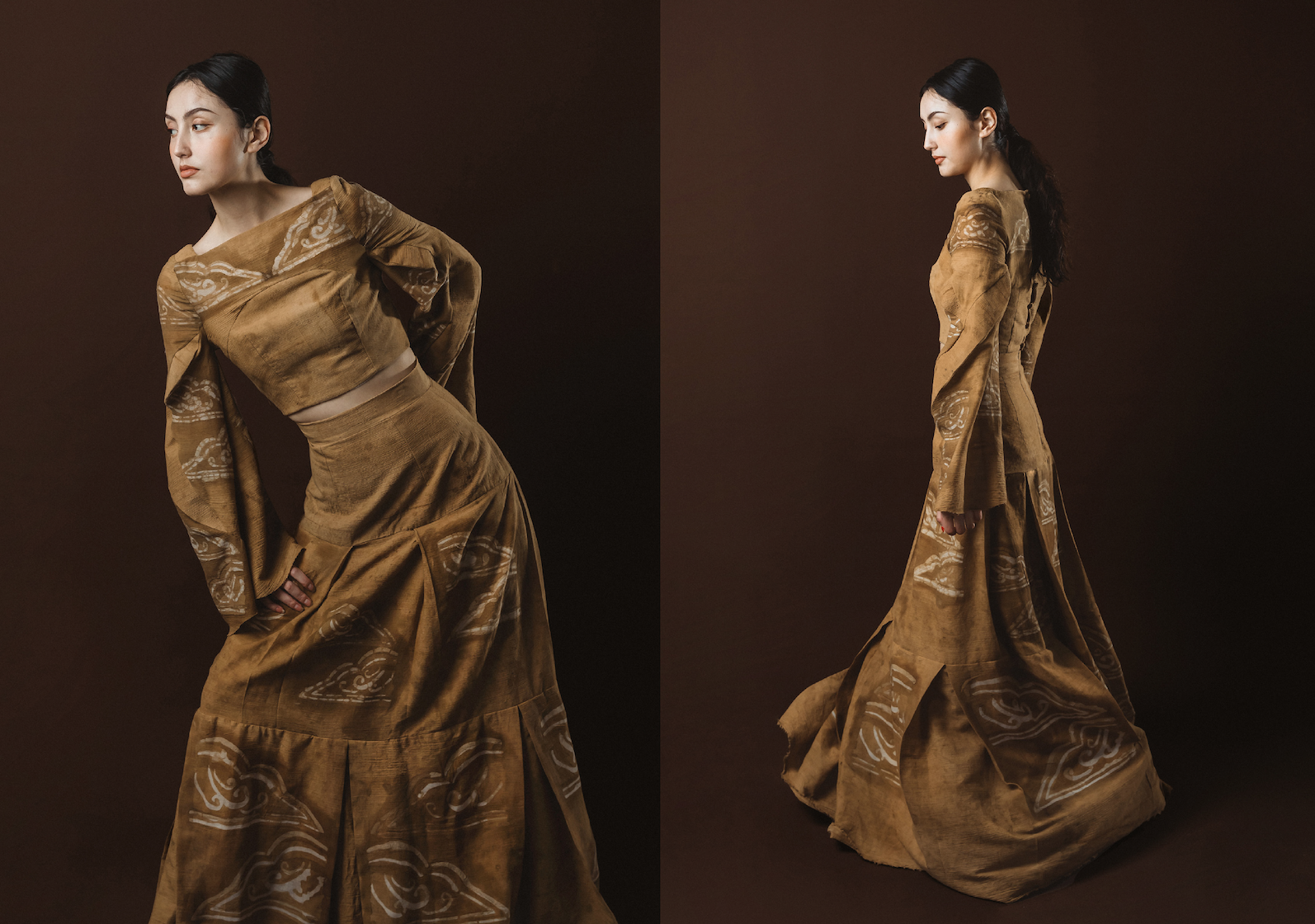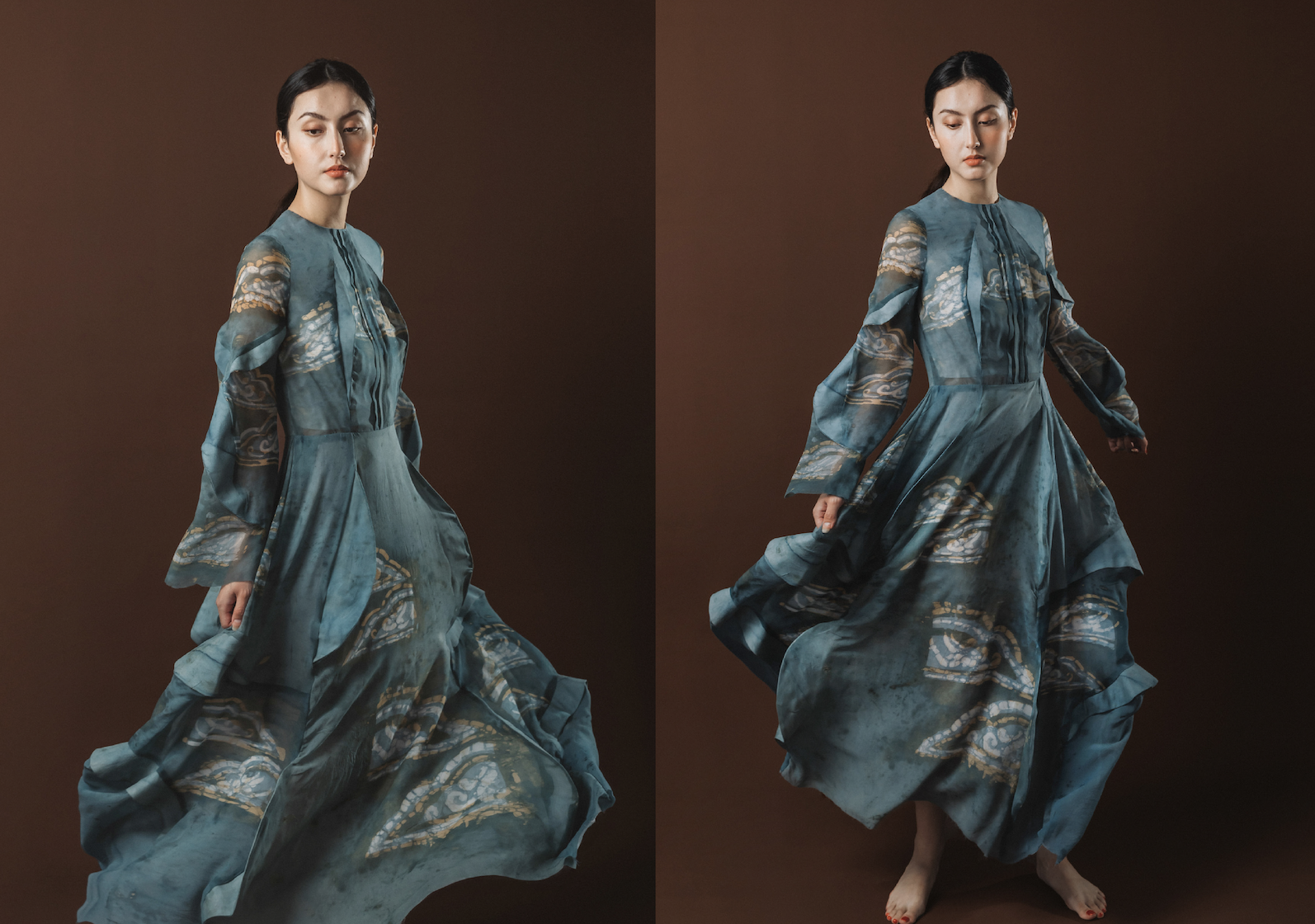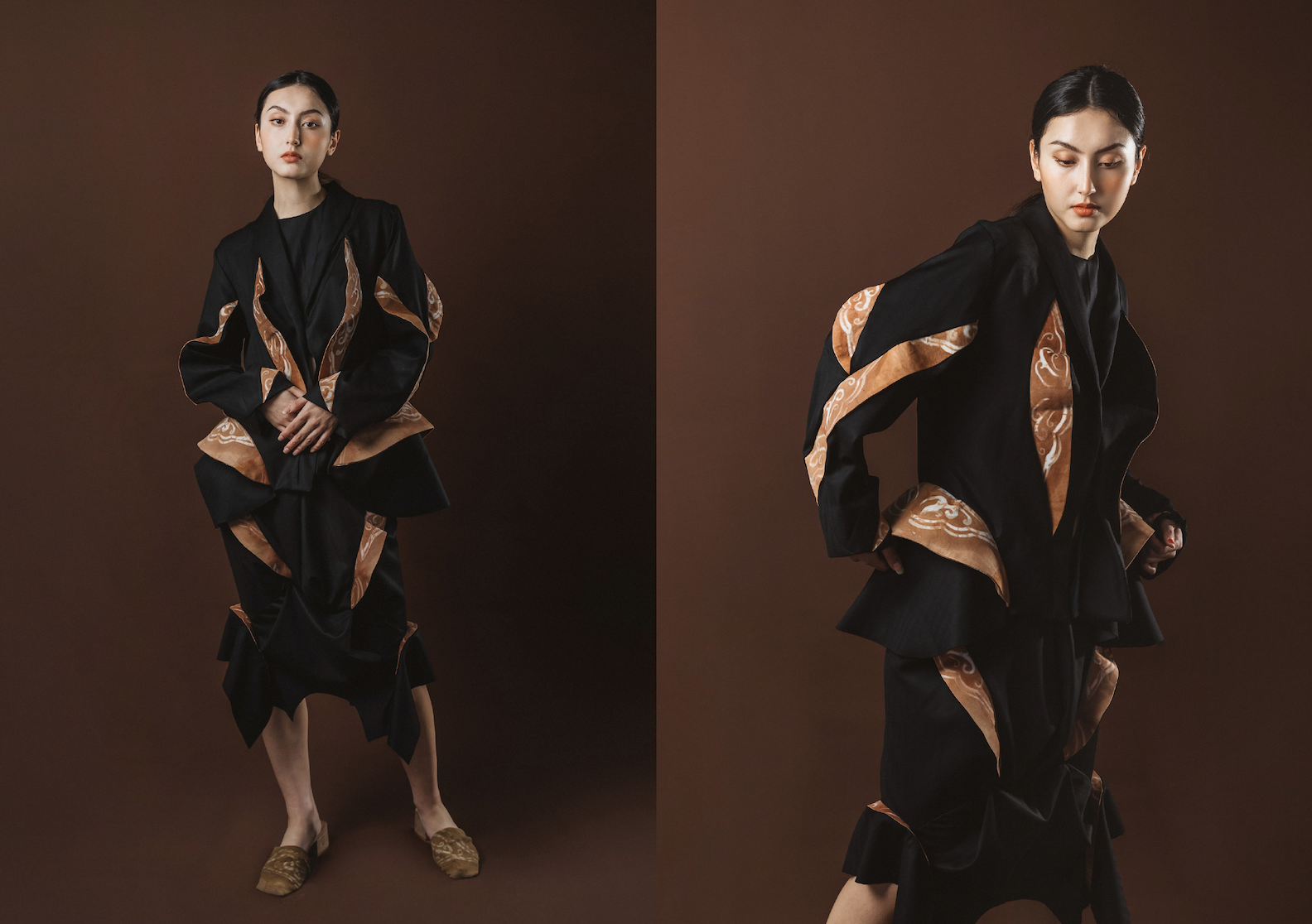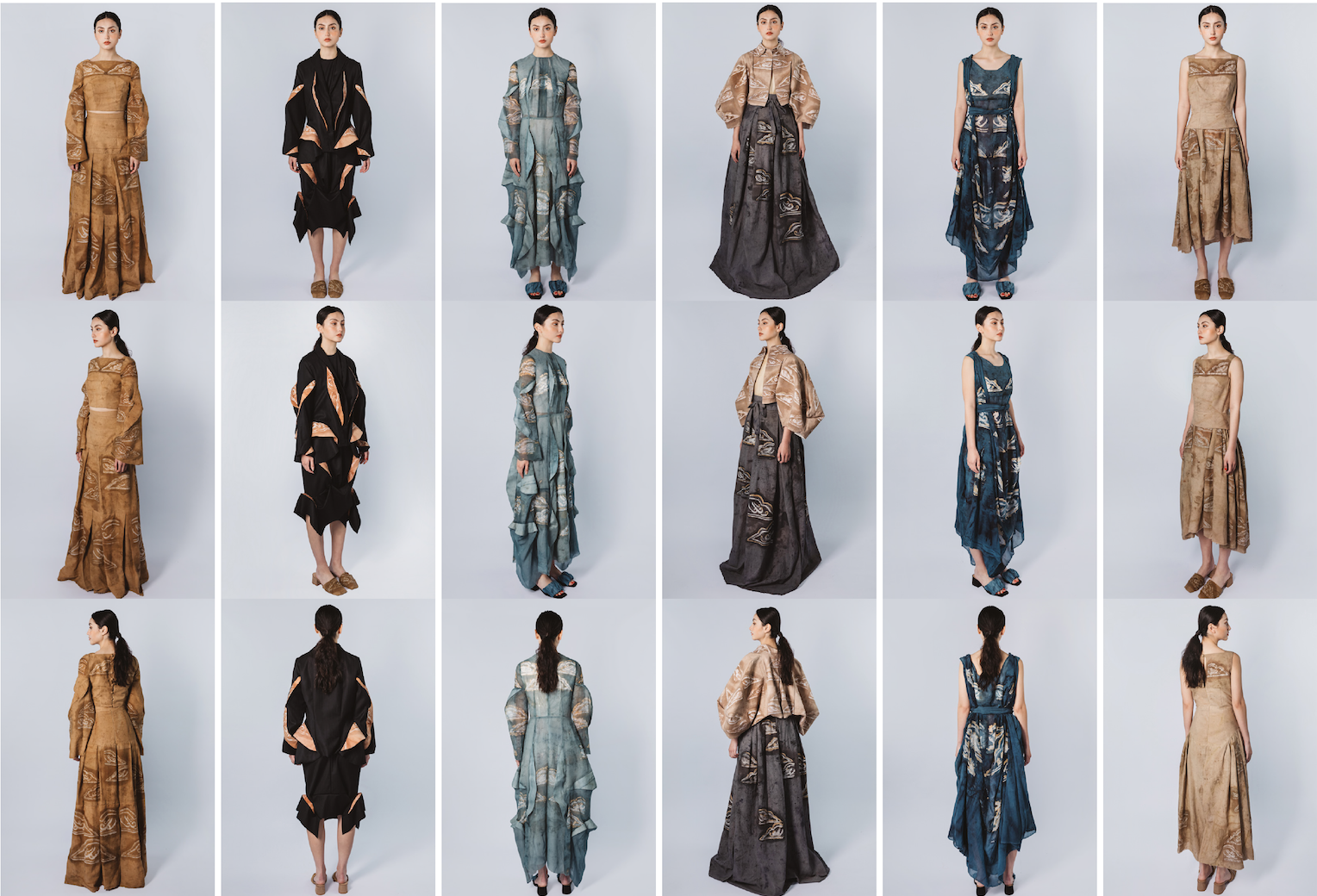I am focusing my design process for ‘Folklore’ collection on cultivating my cultural heritage and creating a more sustainable system, by applying Indonesian traditional batik technique. I believe in order to create a more sustainable system in fashion industry, we need to learn from the past since our ancestors used to have a better relationship with nature. Batik itself has been developed and practiced by generations of Indonesians to create intricate and authentic textiles using traditional and sustainable method. However it has shifted to industrial digital printing method using chemicals, since the focus has dramatically drifted from causing the least damage for the environment to gaining maximum profit and fulfilling demand.
The design design process execution is divided into two areas, which are fashion and textile. Pattern making has been my main interest in fashion design and I am expressing the structured but soft silhouette in this collection. Since I am creating my print traditionally with natural dyes, I am sorting natural-fibre-based fabrics. I am looking at a range of fabrics with different weigh from silk georgette, silk organza, cotton cheesecloth, cotton seersucker, cotton drill and cotton/linen canvas. Due to different geography and climate between Australia and Indonesia, testing to source the most suitable natural dyes from Victoria that works on these fabrics is needed.
This resulted in some plant-based dye which create the most vibrant and suitable colours. It's crucial for me that I am creating the batik textile completely myself for this collection to fully perform the authenticity of traditional technique handmade Indonesian batik. I started by developing my batik textile design, I am developing the renown Megamendung motif, touched with my own design. I am achieving this by illustrating the motif, then laser cut acrylic sheets which becomes the stencils to create my motif.

